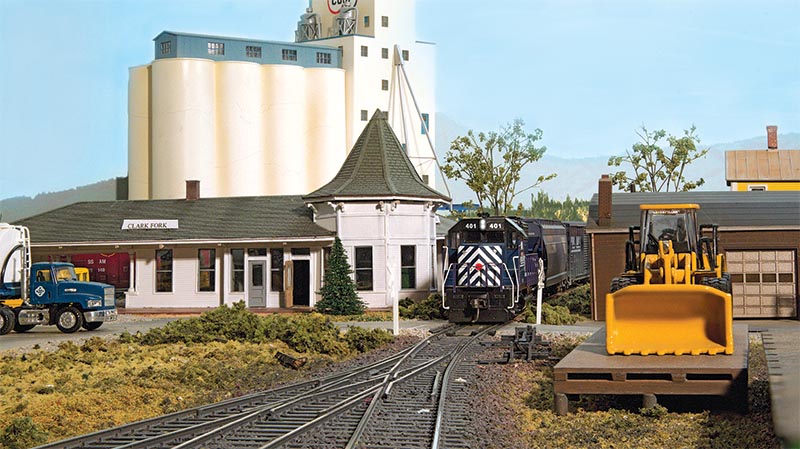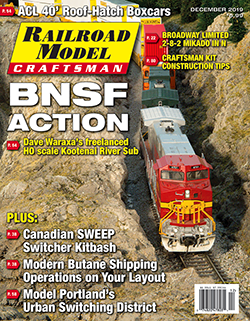 By Dan Munson/photos by the author
By Dan Munson/photos by the author
A mixed set of General Electric C44’s roll up to a stop on the covered fuel pad at Hauser, Idaho. Mechanical employees come out of the nearby shops to start fueling and servicing the locos that are leading the high priority intermodal train. The engineer on the intermodal train has extinguished the headlight as Amtrak Train 8, the east bound Empire Builder, comes into view and rolls up on the fuel pad on the other main. Just a short distance away, in the yard, an EMD GP38 still in Burlington Northern green paint switches out a cut of cars. This is just a small portion of the activities on Dave Waraxa’s freelanced HO scale BNSF Kootenai River Subdivision.
Dave started out in model railroading like many of us, with fond memories of getting a Lionel train set as a child and having his father teach him how to connect the track and wire up the large transformer. He was also taught how to take it apart since his family didn’t have any place for him to set up the railroad permanently. He recalled getting in trouble more than once for not putting his train away.
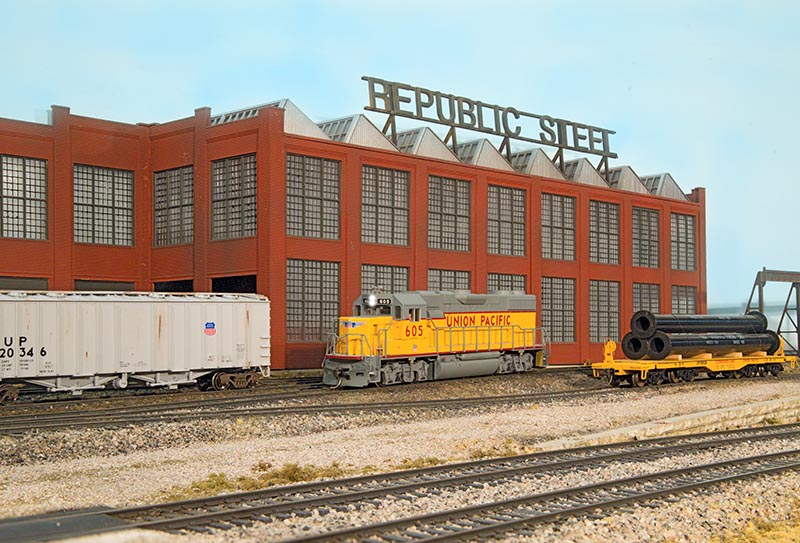
ABOVE: Union Pacific 605 just spotted a flatcar load of large pipe at the team track and is backing into the Republic Steel yard. The next move will be to deliver the empty covered hopper to Sun Flour.
Dave received his first HO scale train set when he was 8 and still has the old belt-driven locomotive to this day, a Milwaukee Road F-unit made by Lionel. His dad sacrificed an 8×9 ping-pong table for his first layout. Dave’s father was supportive of his hobby, and helped build several structures and freight car kits for his son. A quaint two-story white farm house was the first structure built by Dave’s father more than 60 years ago and still holds a place of honor on the railroad in the town of Clark Fork. Dave believes his father was a bit of a “closet” model railroader, since he really enjoyed building structures and kits.
Dave started his current model railroad in 2000 as a project with his grandson in a medium-sized room in the back of his basement. They had completed the benchwork and had started to lay trackwhen Dave was invited to his first operating session at Pat Thoney’s in Eau Clare, Wis. That was all it took—Dave wanted to have an operating railroad.He came home and started making changes to his original plan. He added a staging yard under the stairwell and a yard in the main room. Over the next couple of years, he expanded his railroad into the next two rooms in the basement. As Dave puts it, “Every time my wife went on a cruise, I expanded the railroad into the next room.” The trade-off is, every time Dave goes on a fishing trip, his wife goes out and gets new furniture.
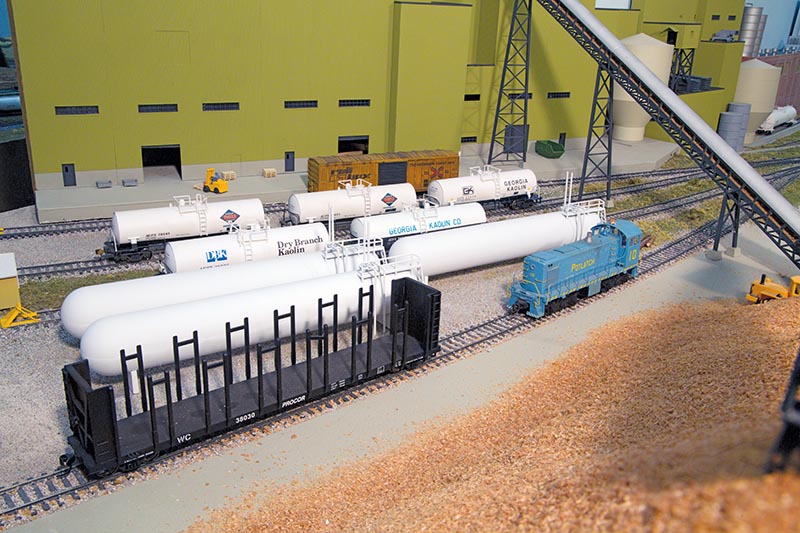
ABOVE: Another job is the Potlatch Mill. A variety of materials are needed to make paper. The mill crew receives their cars from the BNSF at Troy requiring main line track and time. With all the other traffic running through this area, communication with the dispatcher is always needed to get the cars transferred to and from the mill.
Construction
The benchwork construction is a great example of using what you have. Dave and his wife used to own and manage a motel, which they completely rebuilt. There were a lot of used 2×4’s left after this project and he used these to build his bench work. You can bet it’s pretty solid!
Since Dave expanded his railroad room by room, he tried different building techniques as he expanded. One technique that he used was cutting ¼-inch wide strips of 2-inch-thick insulation foam and used this as his roadbed. As Dave points out, “You can get a lot of roadbed out of a 4×8 sheet of foam with a band saw.” Dave also used drywall as the sub-roadbed on smaller sections of the railroad and some Homasote spline for the area from Hauser up to Yardley. Dave has been pleased with the results with all the different materials but likes the stability of the drywall for the layout base.
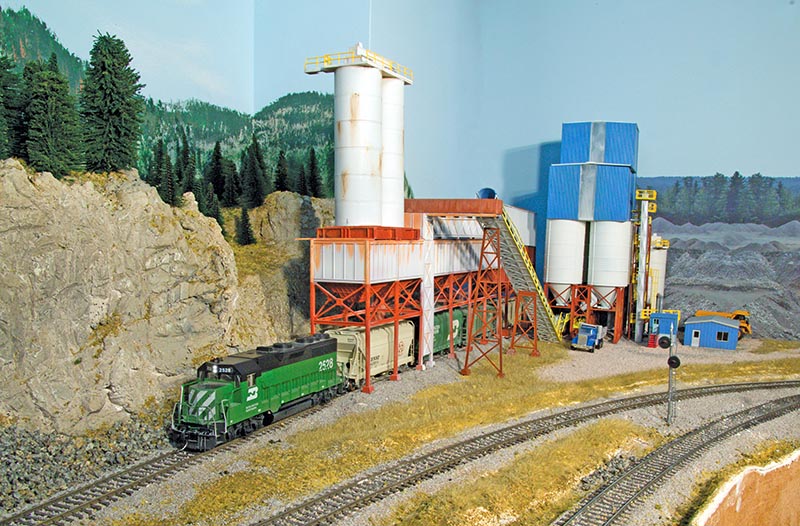
ABOVE: These structures were built by a member of the RiverRail group and modified to fit into the space. Another member of the group works in printing and helped with the creation of the realistic photo backdrop. The Burman Quarry is a division of Spock Materials, which is owned by Vulcan, of course!
All of the track on the Kootenai River Sub is Atlas Code 83. Dave used a variety of switch manufacturers from Atlas, Walthers and Peco. Toward the end of construction, he started using Peco turnouts and has been pleased with the performance.
Most of the yard and industry switches are thrown by using caboose ground throws. The main line switches are thrown with Circuitron Tortoise slow-motion machines. In some later installations, Dave used a unique method of running a cable from a remotely mounted Tortoise, running it under the turnout connecting it to the throw tie. A brass tube is used to insert the cable through the benchwork, directing the linkage to just under the ballast at the turnout. It was very easy to do and he loves how smooth the switch movement is…


